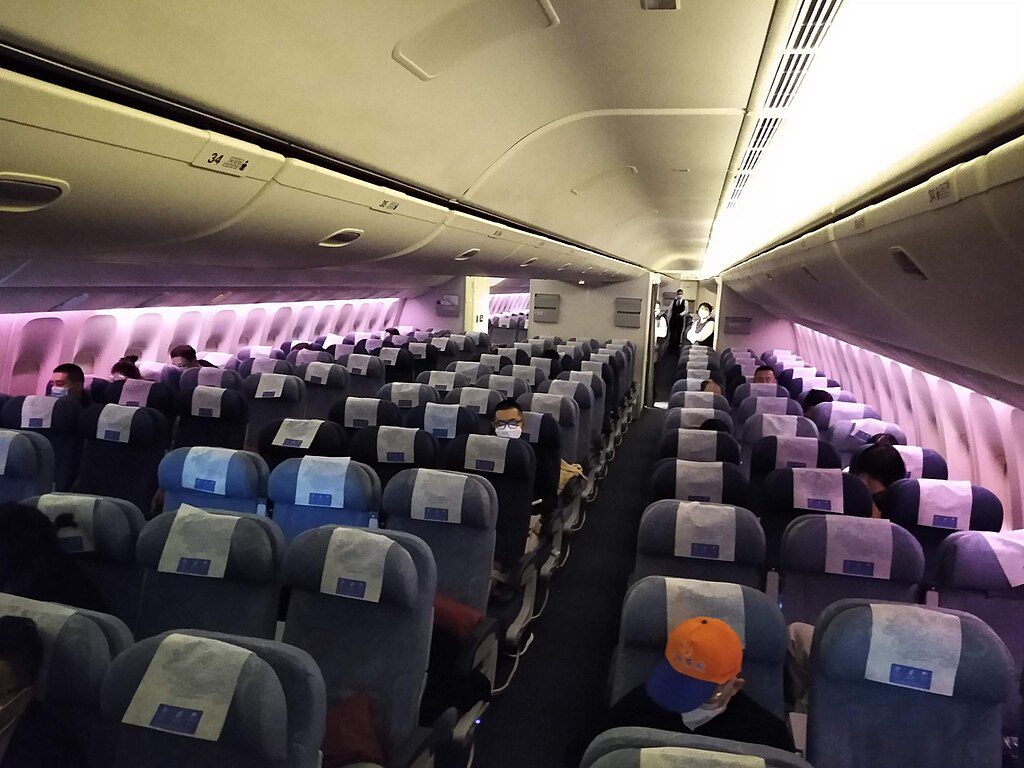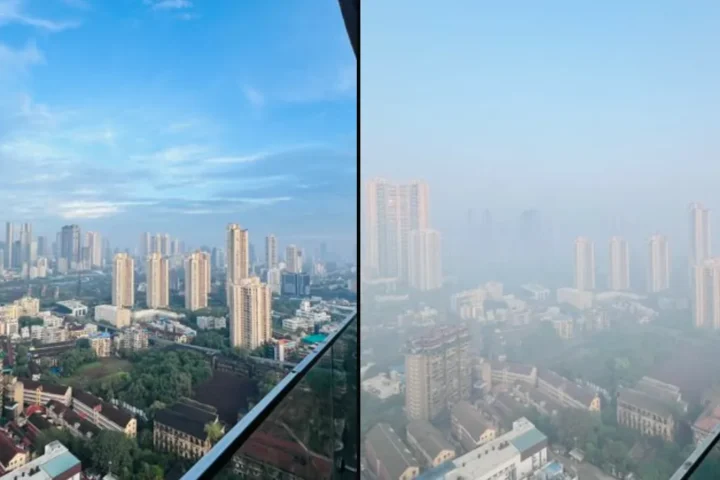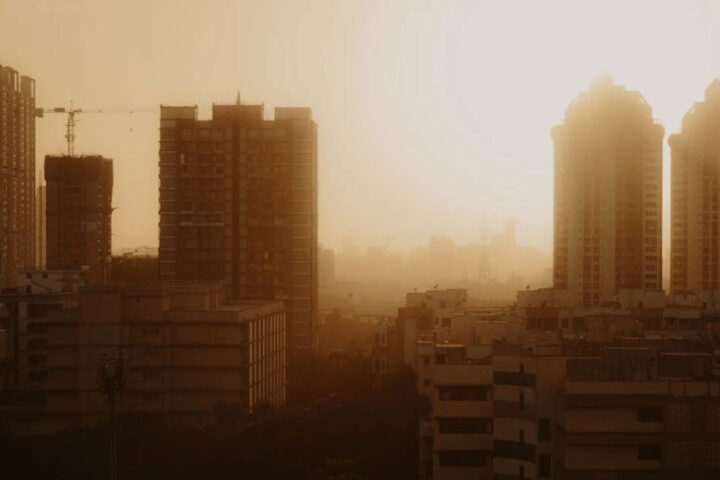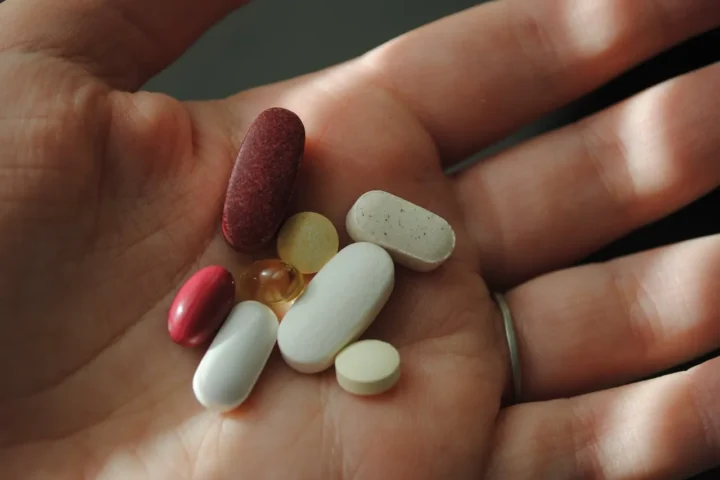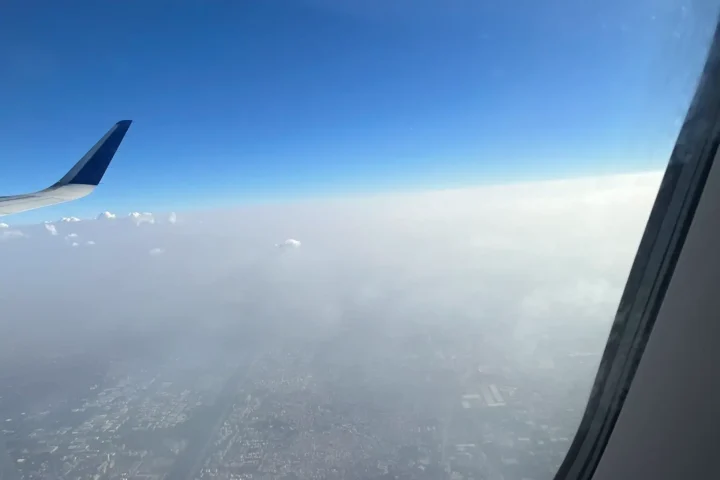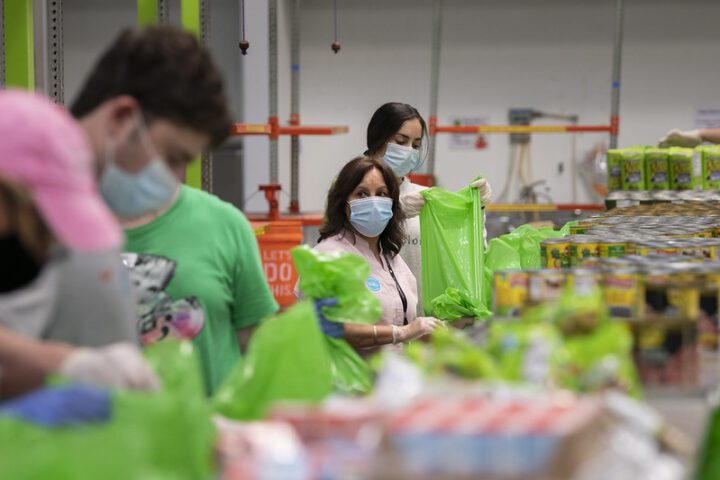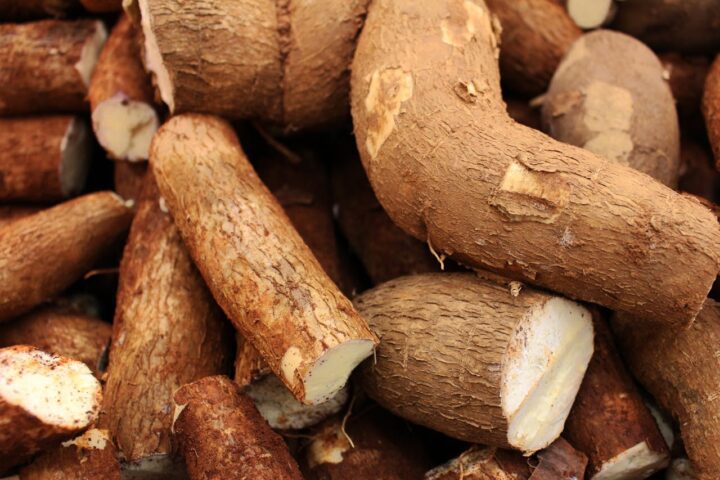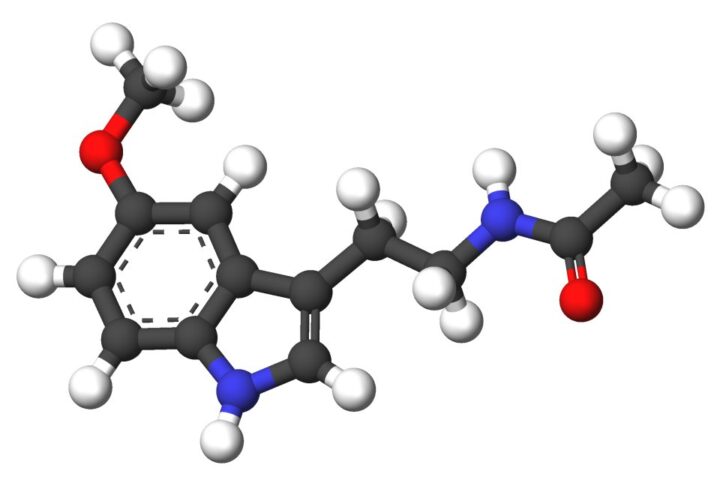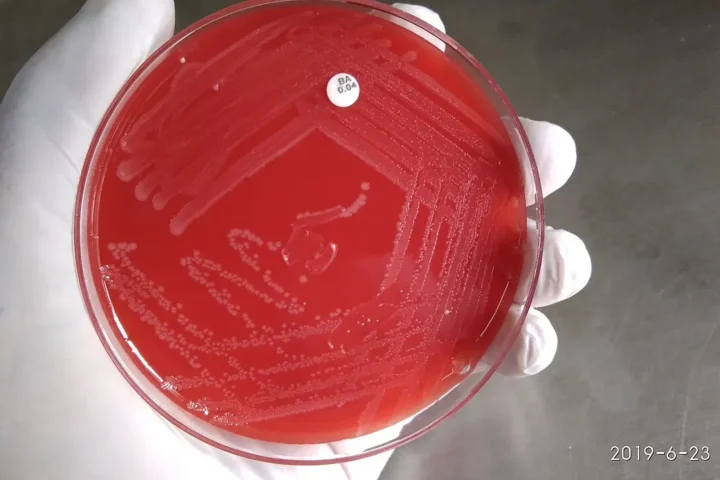Mumbai’s Construction Economy Is Destroying Generations: Profits from 30,000 Units Per Quarter Drives 70% Air Pollution
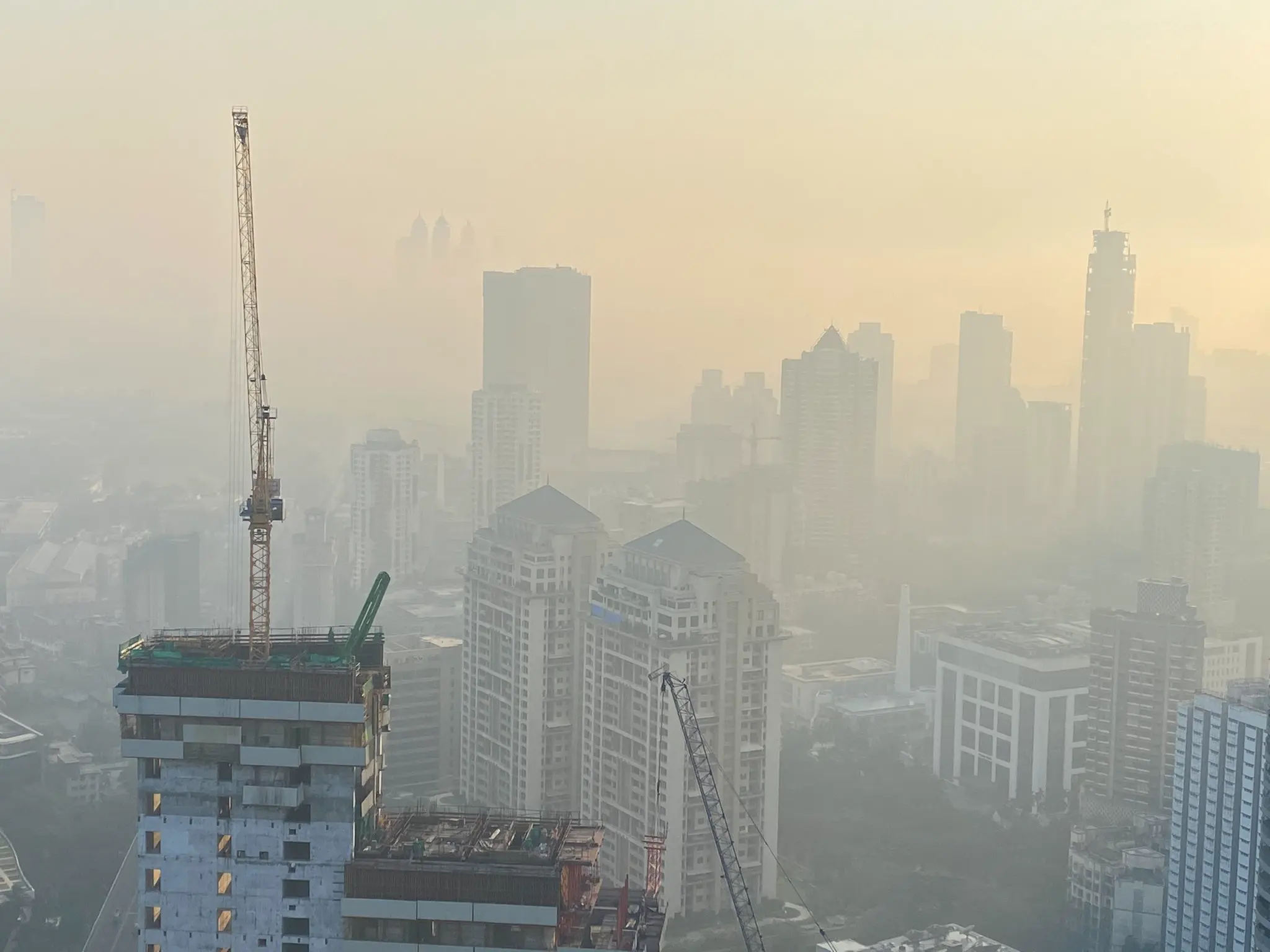
Mumbai Metropolitan Region has become a permanent construction site. With approximately 30,000 new housing units launched every quarter and 1.8-1.9 lakh units perpetually under construction, the scale of building activity is unprecedented. What official reports classify separately as “construction dust” and “road dust” are effectively the same pollution source in a highly concretized city.
According to the Final Source Apportionment and Emission Inventory Report for Mumbai (December 2023) by CSIR-NEERI and IIT Bombay, construction activities contribute approximately 16% of PM10 emissions, while road dust accounts for 50-60%. However, in Mumbai’s concretized landscape where natural dust sources are minimal, this “road dust” predominantly originates from construction sites—tracked material, debris spillage, and resuspended particles from excavation and demolition work.
The 2020 study by NEERI and IIT-B cited by Times of India reported construction-related sources contributing over 70% of particulate matter in Mumbai’s air. This figure aligns with the combined attribution when road dust and construction dust are recognized as interconnected sources rather than separate categories.
The Construction Machine That Never Stops
Mumbai Metropolitan Region operates as a continuous construction zone with no seasonal pause
Understanding the 70% Reality: How Construction Dominates Air Pollution
The apparent discrepancy between official emission inventory categories and the reported 70% figure stems from how pollution sources are classified. In Mumbai’s urban environment, multiple construction-related emission streams are categorized separately in technical reports, obscuring their common origin.
Mumbai’s landscape is almost entirely concretized. Natural soil dust sources are negligible. The city lacks unpaved roads, open agricultural land, or exposed soil surfaces that would contribute natural particulate matter. When official reports attribute 50-60% of PM10 to “road dust,” the source of this dust requires examination.
Road dust in Mumbai consists primarily of construction debris tracked onto paved surfaces, fine concrete powder from building sites, sand and cement residues from material transport, excavation spoil from metro tunneling and foundation work, and dried waste from aggregate stockpiles. These are not natural phenomena—they are downstream construction emissions.
From Construction Sites to Ambient Air: The Pollution Pathway
The Health Burden: From Particles to Disease
Air pollution is now India’s second-largest risk factor for death, according to the State of Global Air 2024 report. Approximately 1.7 million deaths occur annually in India due to air pollution exposure. For Mumbai specifically, this translates to roughly one premature death every hour from pollution-linked diseases.
PM10 particles range from 2.5 to 10 micrometers—small enough to penetrate deep into lung tissue but large enough to cause mechanical irritation. PM2.5 particles (under 2.5 micrometers) can cross into the bloodstream and travel to organs throughout the body. Particles under 1 micrometer can cross the blood-brain barrier and even the placental barrier.
The WHO Air Quality Guidelines (2021) state explicitly that there is no safe threshold for PM2.5 exposure. Even concentrations below current regulatory limits cause measurable harm. During dry months, Mumbai regularly exceeds WHO limits by factors of 2-3.
What Construction Dust Does to Human Bodies
Respiratory Damage
Chronic exposure to PM10 and PM2.5 causes asthma, chronic obstructive pulmonary disease (COPD), bronchitis, and lung cancer. Lung tissue damage is cumulative and often irreversible.
Cardiovascular Effects
Fine particles enter the bloodstream through lung alveoli. This leads to endothelial damage, hypertension, cardiac ischemia, and increased stroke risk. Research published in The Lancet Planetary Health links sustained exposure to 4-6 years of reduced life expectancy.
Neurological Impact
Ultrafine particles cross the blood-brain barrier. Studies document cognitive decline, attention deficits in children, and accelerated neurological aging in adults exposed to high pollution levels.
Pregnancy Complications
Research from Delhi and Mumbai has found PM2.5 particles embedded in placental tissue. Exposure during pregnancy increases risk of low birth weight, preterm delivery, and stillbirth.
Child Development
Children breathe twice as much air per body weight as adults. Their developing respiratory and immune systems are particularly vulnerable. Exposure causes stunted lung development and immune dysfunction.
Epigenetic Changes
Chronic pollution exposure modifies gene expression through DNA methylation. These epigenetic changes can affect reproductive cells, potentially passing altered gene expression to offspring.
The Generational Chain Reaction
Unborn (In Utero Exposure)
Pregnant women exposed to high particulate levels experience placental inflammation and reduced oxygen delivery. Fine particles cross the placental barrier, affecting fetal development. Research shows altered gene expression, restricted growth, and increased preterm birth risk. The biological impact begins before birth.
Infants & Toddlers (0-5 Years)
Developing respiratory and immune systems face maximum vulnerability. Exposure during these critical years causes asthma, reduced lung capacity, cognitive impairment, and behavioral issues. Urban pediatric studies document measurable IQ reduction and stunted physical growth linked to air pollution.
School-Age Children (6-18 Years)
Respiratory illnesses cause frequent absences from school. Reduced lung function limits physical activity. Attention deficits affect academic performance. Early metabolic dysfunction and insulin resistance emerge, setting pathways toward diabetes and cardiovascular disease in adulthood.
Working Adults (19-60 Years)
Chronic respiratory and cardiovascular diseases reduce workforce productivity. Healthcare costs increase substantially. Life expectancy in Mumbai and Delhi is shortened by 4-6 years compared to populations breathing clean air. Each decade of high pollution exposure erases multiple years of health progress.
Next Generation (Genetic Inheritance)
Sustained pollution exposure modifies DNA methylation in sperm and ovum. These epigenetic alterations can be inherited, affecting offspring health even if born into cleaner environments. Pollution becomes a biological legacy transmitted across generations.
The Evidence: Data, Research, and Real-Estate Reports
What the Data Shows
The convergence of emission inventory data, real-estate development reports, and public health research presents a consistent picture. Mumbai Metropolitan Region maintains approximately 30,000 new unit launches quarterly with 1.8-1.9 lakh units continuously under construction. This permanent construction activity generates the dominant source of PM10 pollution in the city’s concretized environment.
When construction dust and road dust from construction sources are combined—as the physical reality suggests they should be—construction-related activity accounts for approximately 70% of Mumbai’s PM10 burden. This figure aligns with the 2020 study referenced in multiple reports on India’s air quality crisis.
The health consequences are measurable and severe. Air pollution causes approximately 1.7 million deaths annually in India. In Mumbai, residents experience respiratory disease, cardiovascular damage, cognitive impairment, pregnancy complications, and reduced life expectancy. Children born today face biological changes from pollution exposure that may affect their own children through epigenetic inheritance.
Official data from ANAROCK’s residential market reports and NEERI-IIT Bombay emission inventories provides the foundation for understanding this crisis. The construction economy operates continuously with no seasonal pause for air quality recovery. Until building volume is reduced or construction methods fundamentally change, Mumbai residents will continue breathing construction dust daily.
The information presented here draws from peer-reviewed research, government emission inventories, WHO health guidelines, and real-estate industry data. These sources document how Mumbai’s construction-driven development model generates the particulate pollution that shortens lives and damages the health of current and future generations.


